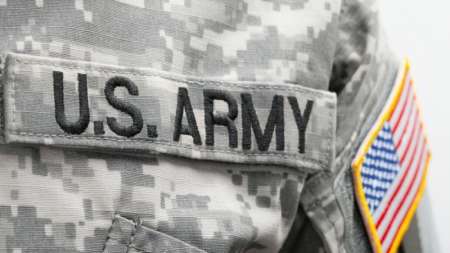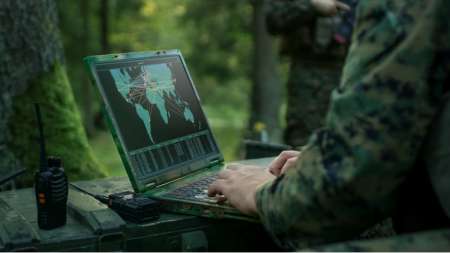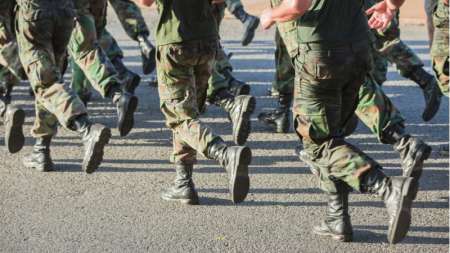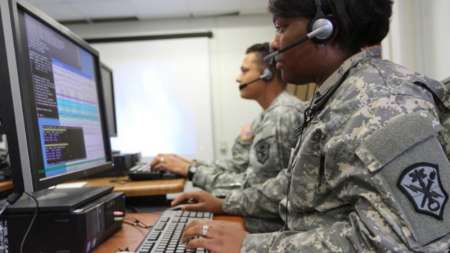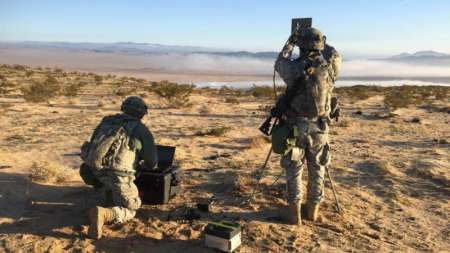The U.S. Army is turning to industry for input on how to best merge three of its largest IT services contracts, according to a request for information (RFI) posted to SAM.gov last week. […]
U.S. Army Chief Information Officer (CIO) Leo Garciga released a new policy earlier this month that aims to create a “chain of responsibility” around the service branch’s data to guide how the Army can manage it efficiently and effectively. […]
The U.S. Army officially launched its Unified Data Reference Architecture (UDRA) 1.0 after teasing the program late last year. UDRA 1.0 focuses on simplifying the Army’s data architecture and streamlining data products across mission partnerships. […]
As it looks to modernize its software procurement process, the U.S. Army is setting up a digital center of excellence for contracting as well as building a “cell” that can offer expertise specific to large software contracts, according to Army Chief Information Officer (CIO) Leonel Garciga. […]
The U.S. Army Program Executive Office Enterprise Information Systems (PEO EIS) has selected Bill Hepworth to serve as the program executive officer (PEO). He took over the position at an Army ceremony on Jan. 26 – replacing Ross Guckert who is retiring after 34 years of service. […]
The U.S. Army is looking for industry input as the service branch seeks to develop a new Army Military Payroll (AMP) “total solution,” according to a request for proposal (RFP) issued on Jan. 18. […]
The U.S. Army is widening its online approach to recruiting new enlisted members and civilian personnel by going beyond some of the traditional government job sites, an official from the service branch said this week. […]
Two data czars from the U.S. Army talked about the service branch’s data maturation today, listing specific programs that are aiding in accelerating digital transformation to enable better decision making. […]
The U.S. Army is looking for industry expertise to help unify many of the service’s outdated systems into a single-user interface that can provide a common operating picture, according to a new sources sought notice. […]
The U.S. Army has issued the third in a series of queries to industry seeking best practices and capabilities that would help the service build and implement its Unified Data Reference Architecture (UDRA). […]
The U.S. Army is looking to the private sector for ideas on proactive monitoring and critical vulnerability mitigation to shore up its software supply chain and improve the security of its thousands of software components and third-party libraries, principally through Software Bills of Material processes. […]
The U.S. Army has begun assessments of its newly introduced networked command posts in the service branch’s existing network infrastructure, the Army said on Sept. 8. […]
The U.S. Army once again issued a contract extension for its popular IT contract vehicle, allowing 16 companies to continue to compete for orders to deliver IT products and services to defense civilian agencies for an additional 21 months. The Army also added $2.5 billion to the contract’s ceiling. […]
The U.S. Army is debuting a civilian capability for the service branch’s voluntary education and training portal – dubbed ArmyIgnitED – the agency announced on August 14. […]
The U.S. Army is currently looking to integrate its tactical networks with its enterprise cloud systems, something that a top Army official this week said is “really challenging” to do. […]
Tech-sector companies need more education on requirements needed to operate within the Department of Defense (DoD), especially for cloud software-as-a-service (SaaS) providers new to the department, a U.S. Army official said this week. […]
The U.S. Army has awarded Accenture Federal Services a $94 million contract to maintain and transform the agency’s Identity, Credential, and Access Management (ICAM) system. […]
The U.S Army Combat Capabilities Development Command (DEVCOM) is looking for industry’s help to create a system in which the Army can forecast “near-term enemy courses of action (ECOA) based on current Situational Awareness (SA)” according to the new request for information (RFI). […]
The Space Development Agency (SDA) released its final request for proposals for procurement of 100 satellites that the agency will use to expand its military constellation system. […]
Amber Chaudhry, acting chief experience officer at the U.S. Department of Housing and Urban Development (HUD), has left her position at the department, according to her LinkedIn posting. […]
The U.S. Army has appointed Leonel Garciga to be its next chief information officer (CIO), filling a key IT position within the services that has been vacant for several months, according to a June 26 announcement. […]
The U.S. Army is looking for input from industry on the best products, research, innovations, and operational concepts to best protect its data sets for use in artificial intelligence (AI) and machine learning (ML) applications. […]
The Army is on pace to bring its long-awaited augmented reality (AR) headsets into production as early as 2025, according to a top acquisition official. […]
U.S. Army Chief of Staff Gen. James McConville today voiced his support for the Army’s use of augmented reality (AR) headsets, saying the service branch needs to “be persistent” with them in order to transform how soldiers operate on the battlefield. […]
The U.S. Army is utilizing AI technologies to train its workforce and develop predictive AI models, a top U.S. Army official shared today at the Digital Transformation Summit in Reston, Va., organized by MeriTalk and ACT-IAC. […]
The U.S. Army Contracting Command-Aberdeen Proving Ground (ACC-APG) is asking industry about their experience with augmented reality, command, control, communicate, and coordinate (ARC4) software, and their ability to provide those capabilities to the service branch, according to a request for information (RFI) posted on Feb. 15 to Sam.gov. […]
The U.S. Army is looking for new autonomous technology to support military efforts in its Maneuver Support Capability Development Integration Directorate (MS CDID), according to a request posted Feb. 14 on Sam.gov. […]
The Army Futures Command (AFC) is looking to the private sector for insight into a range of potential technology capabilities to deploy as part of AFC’s Technology Gateway program this fall, according to a Feb. 3 special notice published on Sam.gov. […]
Several emerging technologies have allowed the U.S. Army to stay ahead but the service branch still faces some challenges, LTG Maria Gervais, deputy commanding general at the U.S. Army Training and Doctrine Command, said during the AFCEA NOVA IT Day event hosted by AFCEA NOVA on Jan. 12. […]
Chief information officers (CIO) from the U.S. Army Reserve and the National Guard Bureau (NGB) laid out their top tech priorities and projects they have in the works as they head full force into 2023. […]

